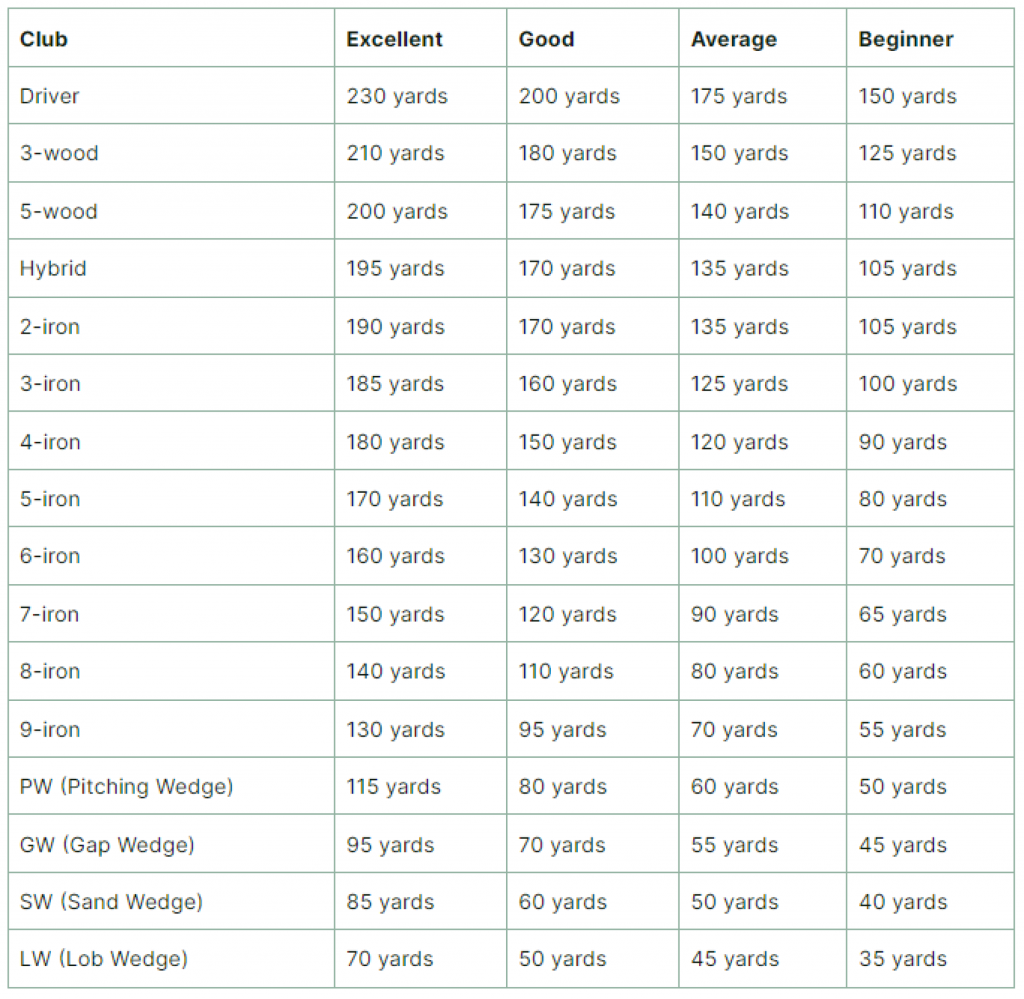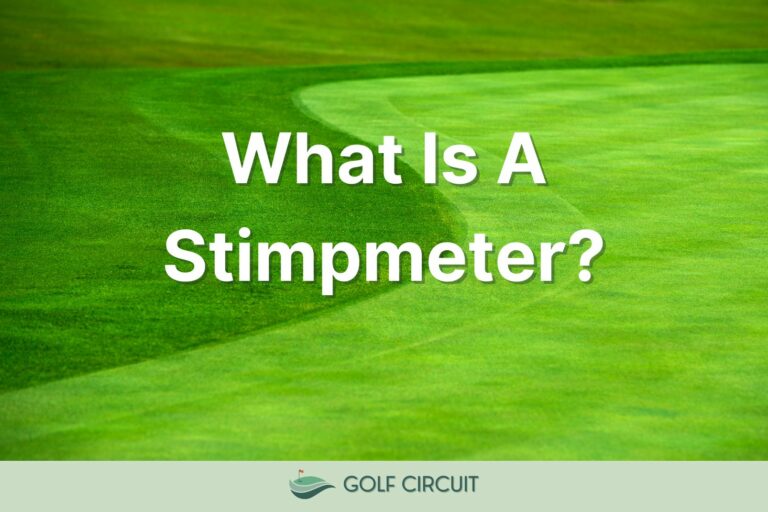Golf Club Distance Charts: How Far Should I Hit Each Club?
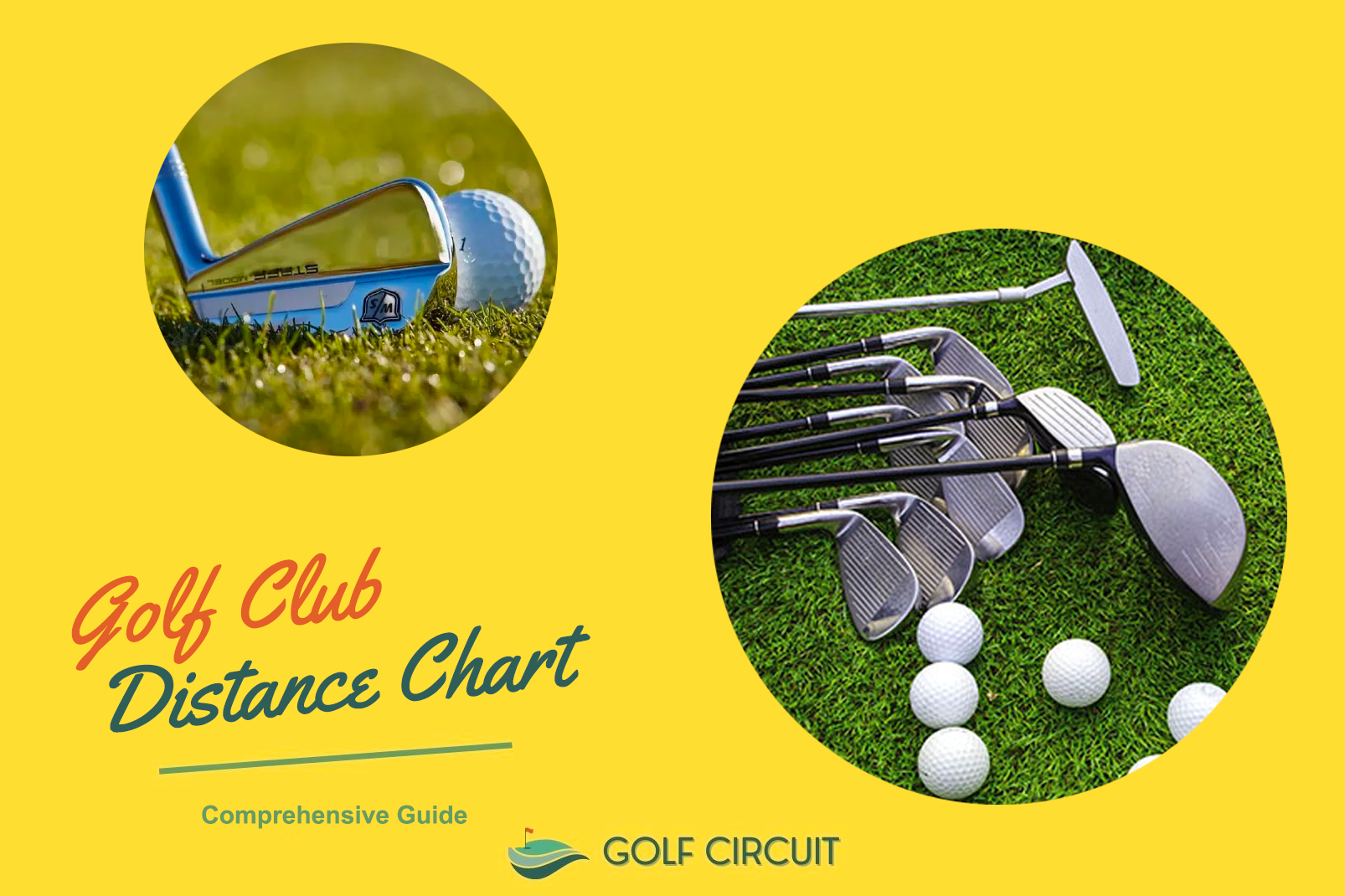
If you’re new to golf or looking to improve your game, understanding the distance each club can hit is crucial. It can help you identify the right club to use for each shot on the course.
However, it’s important to note that there are several factors that can affect how far a particular club can hit, including the swing speed, impact location, weather conditions, and launch angle.
In this article, we’ll discuss those factors, along with golf club distance charts in detail. It’ll provide you with a good starting point to understand the distances each club can typically hit.
Factors that Affect Golf Club Distance
Before getting into the details of different charts explaining golf club distances, let’s discuss major factors that can affect golf club distance.
Swing Speed
When it comes to hitting long golf club distances, swing speed, or club speed, is critically important. More swing speed leads to more energy transferred from the club to the ball, resulting in higher ball speed and more distance.
The following chart contains the average club speed by a player’s age.
| Age (in Years) | Women’s Speed | Men’s Speed |
| 60 or above | 70 – 73mph | 90 – 93mph |
| 51 – 60 | 73 – 76mph | 98 – 101mph |
| 41 – 50 | 88 – 91mph | 103 – 106mph |
| 26 – 40 | 90 – 93mph | 108 – 111mph |
| 17 – 25 | 93 – 96mph | 113 – 116mph |
| 10 – 16 | 83 – 86mph | 93 – 96mph |
Smash Factor
Smash Factor is the result of ball speed divided by the club speed. It provides you with a ratio of energy transfer from the club head to the ball.
A higher Smash Factor means a more efficient transfer of energy, resulting in more distance.
Impact Location
Hitting the “sweet spot” on the clubface results in the optimal transfer of energy, and increases the total distance covered by the ball. Whereas striking too high, low, or off-center can lead to lower smash factors and reduced distance.
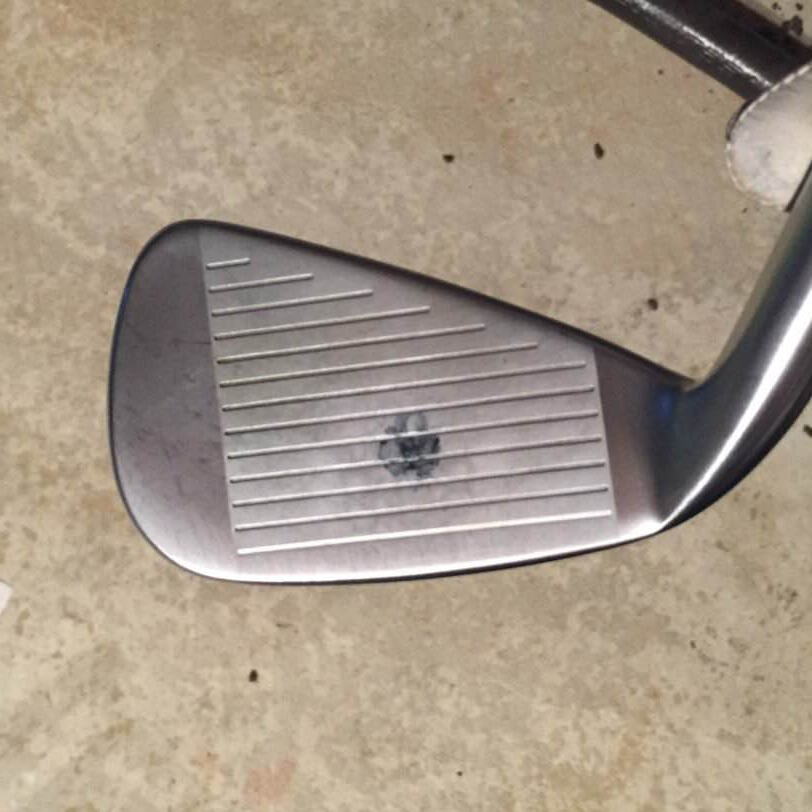
Equipment
PGA Tour professionals use custom-fit equipment tailored to their specific technique, skill level, and body shape. The same swing speed by a pro and an amateur will result in vastly different ball distances.
Additionally, the club type, such as wedges, irons, and drivers, also makes a difference because of different materials and sizes. If you are a beginner, we’ve written a post on the Best Golf Clubs for Beginners.
Weather and Course Conditions
Weather and course conditions such as wind and altitude can have a significant impact on club distance. Therefore, it’s essential to consider these factors when deciding on which club to use.
Skill Level
Skill level is another important factor that affects the distance of your shots. A beginner or average golfer will likely hit the ball much shorter than an experienced or professional golfer.
It’s essential to understand your skill level and work with it, rather than trying to emulate the shots of more skilled golfers.
Golf Club Distance Charts
Are you a beginner golfer and looking to improve your golf game? Knowing the average distance golfers hit each club can help you develop a more strategic approach.
The following golf club distance charts will provide you with information on the average distances golfers hit their clubs.
Golf Club Distance Chart for Men
Use the following chart to see the average distances that men hit using different golf clubs based on their experience level.
| Club | PGA Tour | Advanced | Good | Average | Beginner |
| Driver | 296 yards | 285 yards | 250 yards | 220 yards | 190 yards |
| 3-wood | 262 yards | 250 yards | 225 yards | 210 yards | 170 yards |
| 5-wood | 248 yards | 230 yards | 205 yards | 195 yards | 150 yards |
| Hybrid | 242 yards | 220 yards | 190 yards | 180 yards | 145 yards |
| 2-iron | 236 yards | 215 yards | 190 yards | 180 yards | 145 yards |
| 3-iron | 228 yards | 210 yards | 180 yards | 170 yards | 135 yards |
| 4-iron | 219 yards | 195 yards | 170 yards | 160 yards | 125 yards |
| 5-iron | 209 yards | 185 yards | 165 yards | 155 yards | 120 yards |
| 6-iron | 197 yards | 175 yards | 160 yards | 145 yards | 115 yards |
| 7-iron | 185 yards | 165 yards | 150 yards | 140 yards | 105 yards |
| 8-iron | 172 yards | 155 yards | 140 yards | 130 yards | 95 yards |
| 9-iron | 159 yards | 145 yards | 125 yards | 115 yards | 80 yards |
| PW (Pitching Wedge) | 146 yards | 135 yards | 110 yards | 100 yards | 70 yards |
| GW (Gap Wedge) | 135 yards | 125 yards | 100 yards | 90 yards | 60 yards |
| SW (Sand Wedge) | 124 yards | 115 yards | 95 yards | 80 yards | 55 yards |
| LW (Lob Wedge) | 113 yards | 105 yards | 80 yards | 60 yards | 40 yards |
According to USGA (United States Golf Association), an average male golfer achieves a drive distance of around 210 yards with a club speed of 80 to 90 MPH.
Golf Club Distance Chart for Women
Use the following chart to see the average distances that women hit using different golf clubs based on their experience level.
| Club | Excellent | Good | Average | Beginner |
| Driver | 230 yards | 200 yards | 175 yards | 150 yards |
| 3-wood | 210 yards | 180 yards | 150 yards | 125 yards |
| 5-wood | 200 yards | 175 yards | 140 yards | 110 yards |
| Hybrid | 195 yards | 170 yards | 135 yards | 105 yards |
| 2-iron | 190 yards | 170 yards | 135 yards | 105 yards |
| 3-iron | 185 yards | 160 yards | 125 yards | 100 yards |
| 4-iron | 180 yards | 150 yards | 120 yards | 90 yards |
| 5-iron | 170 yards | 140 yards | 110 yards | 80 yards |
| 6-iron | 160 yards | 130 yards | 100 yards | 70 yards |
| 7-iron | 150 yards | 120 yards | 90 yards | 65 yards |
| 8-iron | 140 yards | 110 yards | 80 yards | 60 yards |
| 9-iron | 130 yards | 95 yards | 70 yards | 55 yards |
| PW (Pitching Wedge) | 115 yards | 80 yards | 60 yards | 50 yards |
| GW (Gap Wedge) | 95 yards | 70 yards | 55 yards | 45 yards |
| SW (Sand Wedge) | 85 yards | 60 yards | 50 yards | 40 yards |
| LW (Lob Wedge) | 70 yards | 50 yards | 45 yards | 35 yards |
According to USGA statistics, the average drive distance for female golfers from 2013 to 2019 was 148 yards.
Golf Club Distances Chart by Swing Speed
As discussed already, swing speed does affect the drive distances and they’re shown in the following table. It’ll come in handy on the golf course when you’re not carrying a launch monitor or rangefinder.
| Club | 140 MPH | 130 MPH | 120 MPH | 110 MPH | 100 MPH | 90 MPH | 80 MPH | 70 MPH | 60 MPH |
| Driver | 361 yards | 335 yards | 310 yards | 284 yards | 258 yards | 232 yards | 206 yards | 181 yards | 155 yards |
| 3-wood | 303 yards | 283 yards | 259 yards | 238 yards | 215 yards | 195 yards | 175 yards | 150 yards | 130 yards |
| 5-wood | 285 yards | 265 yards | 245 yards | 225 yards | 205 yards | 185 yards | 165 yards | 145 yards | 125 yards |
| Hybrid | 280 yards | 260 yards | 240 yards | 220 yards | 200 yards | 180 yards | 160 yards | 140 yards | 120 yards |
| 2-iron | 271 yards | 252 yards | 233 yards | 213 yards | 194 yards | 176 yards | 155 yards | 135 yards | 118 yards |
| 3-iron | 265 yards | 245 yards | 226 yards | 207 yards | 188 yards | 172 yards | 150 yards | 130 yards | 115 yards |
| 4-iron | 245 yards | 226 yards | 208 yards | 190 yards | 180 yards | 165 yards | 145 yards | 126 yards | 110 yards |
| 5-iron | 228 yards | 215 yards | 198 yards | 185 yards | 170 yards | 155 yards | 138 yards | 120 yards | 105 yards |
| 6-iron | 208 yards | 195 yards | 185 yards | 175 yards | 165 yards | 145 yards | 130 yards | 115 yards | 100 yards |
| 7-iron | 195 yards | 185 yards | 175 yards | 165 yards | 155 yards | 135 yards | 120 yards | 105 yards | 95 yards |
| 8-iron | 190 yards | 175 yards | 165 yards | 155 yards | 145 yards | 130 yards | 115 yards | 100 yards | 85 yards |
| 9-iron | 186 yards | 175 yards | 310 yards | 145 yards | 130 yards | 120 yards | 105 yards | 90 yards | 80 yards |
| PW (Pitching Wedge) | 167 yards | 156 yards | 259 yards | 135 yards | 120 yards | 110 yards | 100 yards | 85 yards | 73 yards |
Ball Speed to Distance Chart
The following values are rough estimates of the distance a golf ball will travel in the air, along with the corresponding club head speed and ball speed.
| Ball Speed in MPH | Club Head Speed in MPH | Driver Carry in Yards |
| 110 | 77 | 181 |
| 120 | 84 | 198 |
| 130 | 91 | 214 |
| 140 | 98 | 231 |
| 150 | 104 | 247 |
| 160 | 111 | 263 |
| 170 | 118 | 280 |
| 180 | 125 | 296 |
| 190 | 132 | 313 |
| 200 | 138 | 329 |
how to Calculate Your Average Distance
Understanding your average distance is a critical aspect of golf, as it allows you to make better decisions when playing on the course.
While a launch monitor is the easiest way to calculate your average distance, not everyone has access to one.
If you don’t have a launch monitor, consider using the following step-by-step method to calculate your average distance easily.
Step 1: Go to a Driving Range or Golf Simulator
The first step is to go to a driving range or a golf simulator. Once on the range, take at least your five best shots with each club, keeping your mind relaxed and calm.
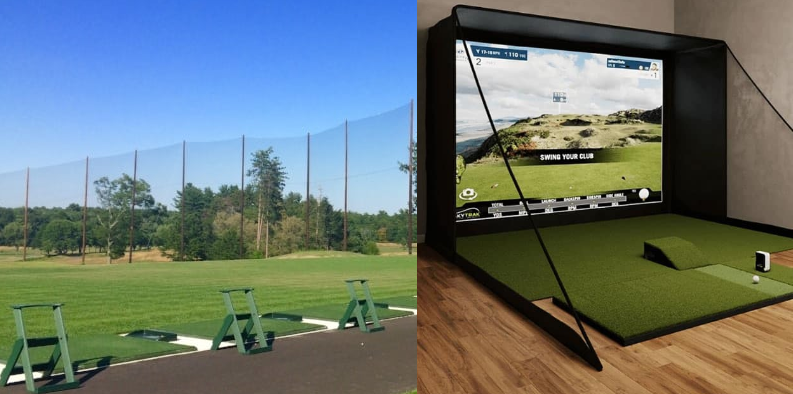
After that, take another round of five shots (or more based on the number of your previous round) with each club from the same spots. This will give you a better understanding of your average distance for each club.
Step 2: Measure the Ball’s Distance
While taking shots, use a rangefinder to measure the distance of each shot after the ball becomes steady. Make sure that you write down the distance of each shot and also note which club you used. If you don’t have a rangefinder, then hopefully the range has flags or objects to give you an idea of distance.
Since different clubs have different distances, organizing the data in a table format can be helpful. This will make it easier to keep track of the information and analyze it later on.
Remember that accuracy is key, so take your time and ensure that you measure each shot correctly, or as close as possible. By organizing your data in a clear and concise way, you will be able to calculate your average distance with ease.
Step 3: Check the Prescribed Average Distance
The final step is to find the average of all your shorts for each club and compare the results with the prescribed average distance, discussed above, to see how well you’re doing.
For example, if the distances of your Driver shots are 210, 212, 214, 208, 205, 213, 218, 208, 219, and 203, then their average will be 211, which is pretty close to the average male player’s distance with the Driver club.
Remember that your average distance will vary depending on your skill level, swing speed, and other factors. So, don’t be too concerned if your average distance is different from the typical values provided online.
With time and practice, you can improve your average distance and become a better golfer.
Golf Tips: How to Increase Your Golf Distance
The following are the most useful tips to incorporate into your game to increase your driving distance.
Master the Fundamentals
Having a fundamentally sound swing is essential for hitting the ball farther. Poor weight transfer, incorrect grips, bad posture, and excessive hip turn are factors that can rob you of driving distance.
Consistent practice is one of the best ways to improve your fundamentals and develop faster swings, which can enhance your opportunity for increased distance.
Adjust Your Tee Height
A tee that’s too high or too low can negatively impact your shot’s trajectory and distance. Consider experimenting with different tee heights to find the optimal height for your swing.
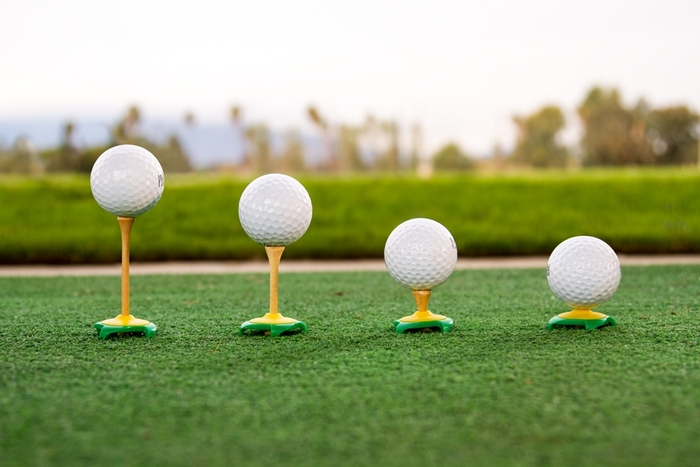
Credit: Practical Golf
Use Your Wrists
When you have positioned yourself properly, allow your wrist to move freely. Hold the club with a proper grip by placing it on your fingers, which will give you the necessary stability to utilize your wrist during your swing.
Improve Your Flexibility
Keep in mind that tight muscles can prevent you from making a full turn, which can limit your power and drive distance. If you want to improve your body’s flexibility, we recommend you perform stretching and practice yoga.
Keep Yourself Physically Fit
Golf involves a lot of walking, which can be physically demanding. Therefore, it’s essential to stay fit and healthy to be able to play at your best.
You can consider taking up exercises such as weight training, cardio, and yoga to build up your core strength and improve your endurance.
Make sure that you focus on exercises that strengthen your lower body as they can help you generate more power in your swing.
Increase Your Clubhead Speed
The faster you swing, the more distance you can achieve. Focus on increasing your clubhead speed to get the most out of your shots. Work on building your core strength and flexibility to improve your swing speed.
Final Words
Knowing how far each of your golf clubs can hit helps you make better club selections on the course and enhance your game.
Remember that the distances discussed in this guide are based on averages and can vary depending on several factors.
However, they can serve as a good starting point to help you better understand how far each of your clubs should go on average.
With the right knowledge and consistent practice, you’ll be well on your way to becoming a better golfer to enjoy each game to its fullest potential.
Printable Golf Club Distance Charts
The chart below is a printable golf club distance chart for Men. Save the image to your computer and you can print the table below.
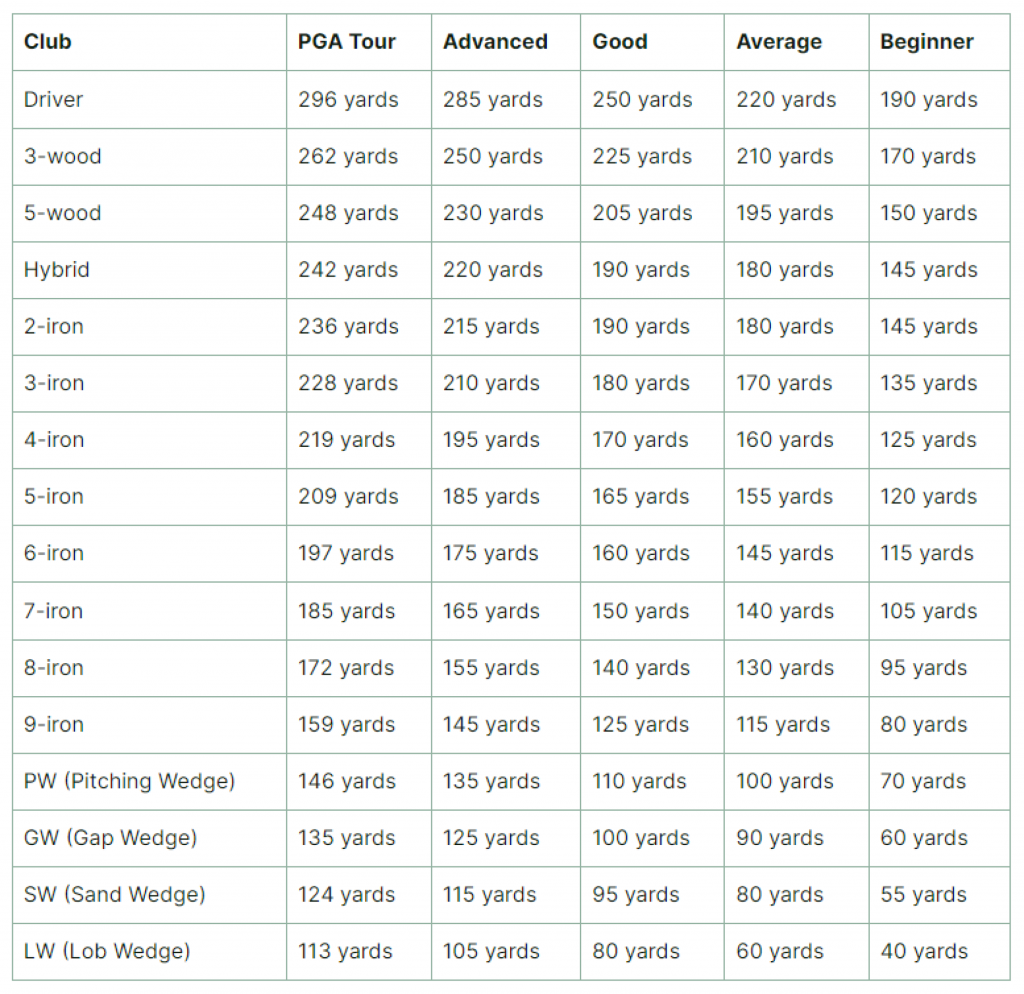
The chart below is a printable golf club distance chart for Women. Save the image to your computer and you can print the table below.
